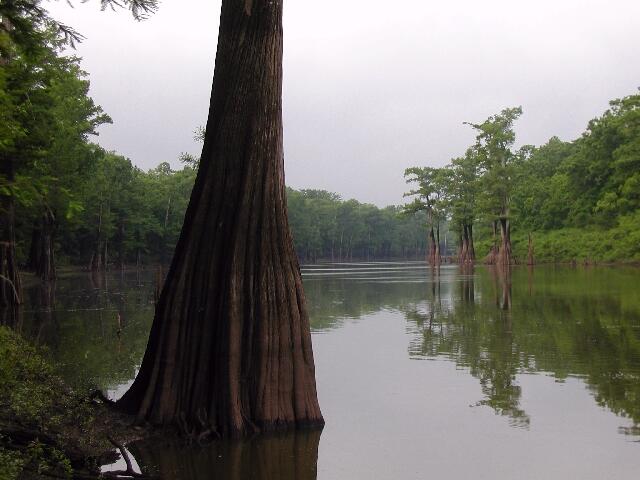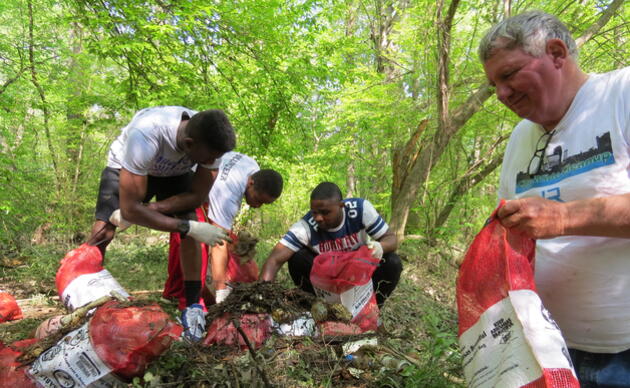
As iconic of Arkansas as the Buffalo National River, the rivers, sloughs, and bottomlands of the Cache-Lower White Rivers Important Bird Area (IBA) are a destination for birders, hunters, and anglers from across the country. The region is a treasure to be protected and promoted.
Site Description:
This global IBA is also a Wetland of International Importance under the Ramsar Convention. Its 241,000 acres includes two national wildlife refuges (Dale Bumpers White River and Cache River) and three wildlife management areas (Rex Hancock Black Swamp, Sheffield Nelson Dagmar, and Trusten Holder). At least half the area floods annually in late winter and spring. Historically most of the land was covered by bottomland hardwood forest, and it still contains the largest continuous expanse of this habitat remaining in the Lower Mississippi River Valley. Depending on flood regime, trees include bald cypress, tupelo, various oaks, sugarberry, honey locust, pecan, and water hickory. Many of the cleared areas are currently being reforested. Rivers, oxbows, sloughs, swamps, and beaver ponds are found throughout.
Ornithological Summary:
Though the “Big Woods” became famous for sightings of the Ivory-billed Woodpecker, the site was already designated as an IBA because it supports a variety of birds of conservation concern. This is the most likely area to support the return of the Swallow-tailed Kite to Arkansas; since 2002, a pair has nested nearly annually in Dale Bumpers White River NWR, the first attempts in over 100 years. This is the most important wintering area for Mallards in North America. Bald Eagles, Mississippi Kites, and Red-tailed, Red-shouldered, and Broad-winged Hawks migrate through and nest in the woods. It is a stronghold for wintering Wood Ducks and Rusty Blackbirds. Hundreds of post-breeding Wood Storks visit every year. A variety of migratory songbirds breed here in good numbers, including: Wood Thrush, Prothonotary Warbler, Hooded Warbler, and Swainson's Warbler.
Conservation Issues:
Despite the large area of bottomland hardwood forest, research by Arkansas State University (with support from the AAS Trust) on Swallow-tailed Kites, Mississippi Kites, Swainson’s Warblers, and other passerines shows that nest predation and cowbird parasitism are still high and hamper nest success. The quantity and quality of habitat continues to increase, however, through a variety of conservation efforts. The US Fish & Wildlife Service (USFWS), Arkansas Game & Fish Commission, Arkansas Natural Heritage Commission, The Nature Conservancy (TNC), Ducks Unlimited, and the Natural Resources Conservation Service are planting trees, managing forests, and restoring wetlands and prairies on public and private lands. Cache River NWR recently expanded its acquisition boundary by over 101,000 acres, and currently has an active land acquisition program in progress. The US Army Corps of Engineers, in partnership with TNC, the City of Clarendon, USFWS, and others (including AAS and Audubon Arkansas) are undertaking an historic effort to restore seven miles of the Cache River that were channelized in the 1970s. Phase I of the project, redirecting the river back into 4.6 miles of meanders, is nearly done. Benefits of restoration include: improved habitat for fish, mussels, and birds; better growing conditions for bottomland forests and wetlands; and revitalization of the land for hunters, anglers, and birders. The partners are currently seeking funding for Phase II, which will complete restoration for the entire altered channel.
How you can help, right now
Be a voice for birds
Join our Advocacy Team to receive action alerts about legislation and policy when Audubon Delta's birds need your voice.
Join Our Flock
Signing up is the best way to keep up with Audubon's latest news, programs and initiatives.




